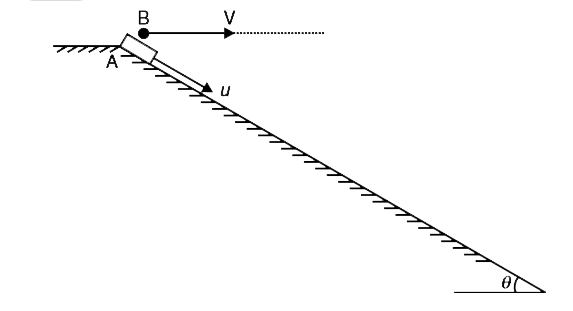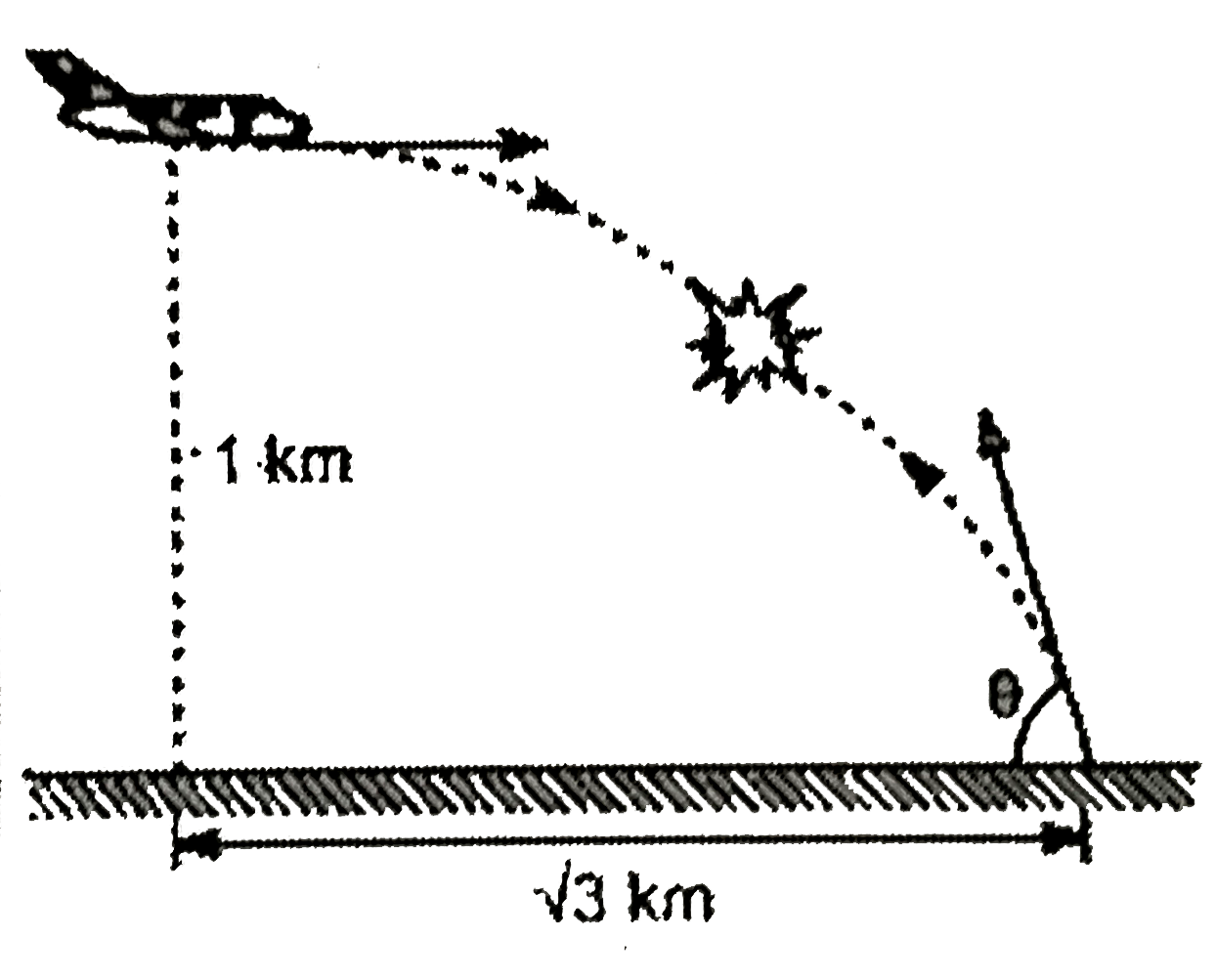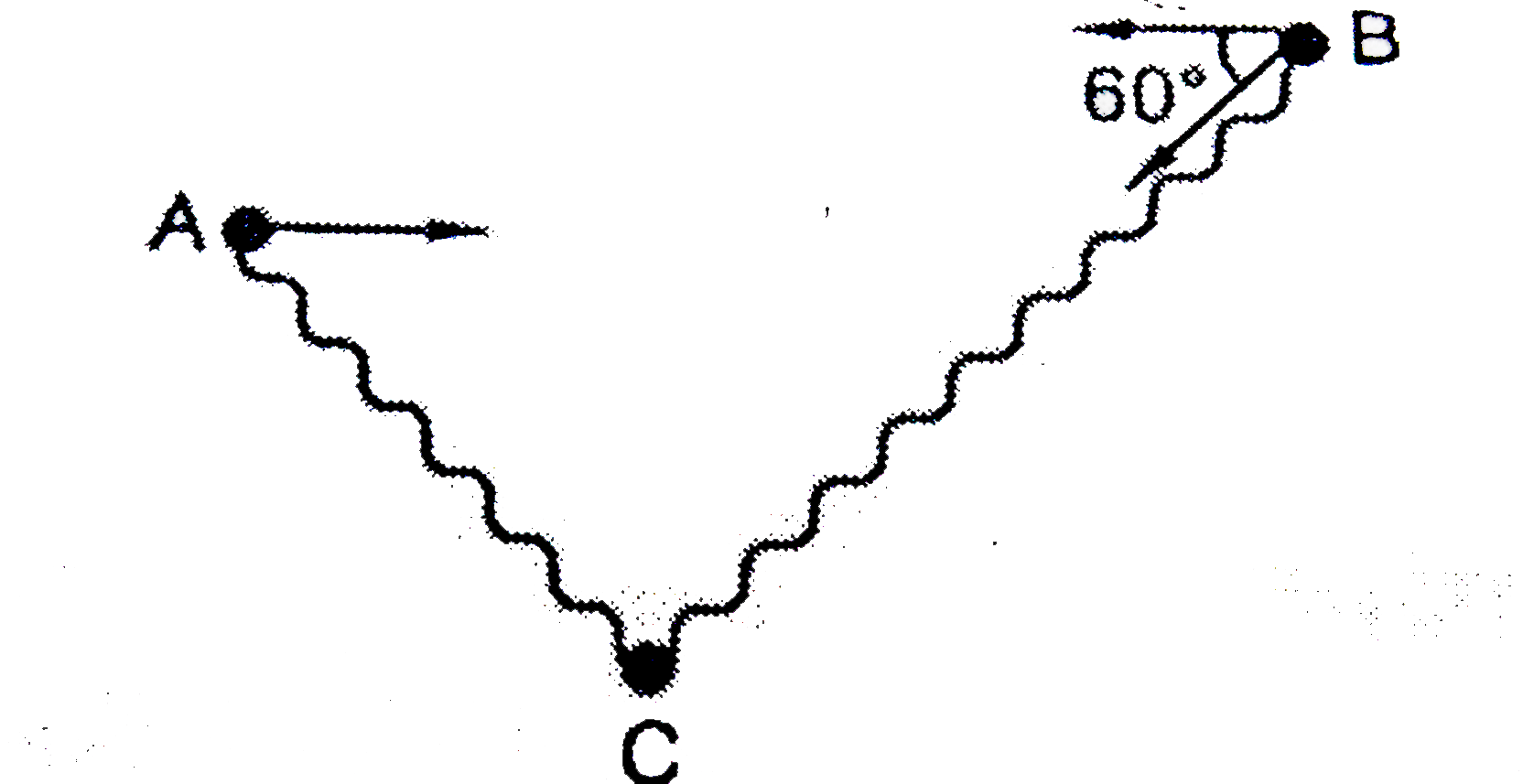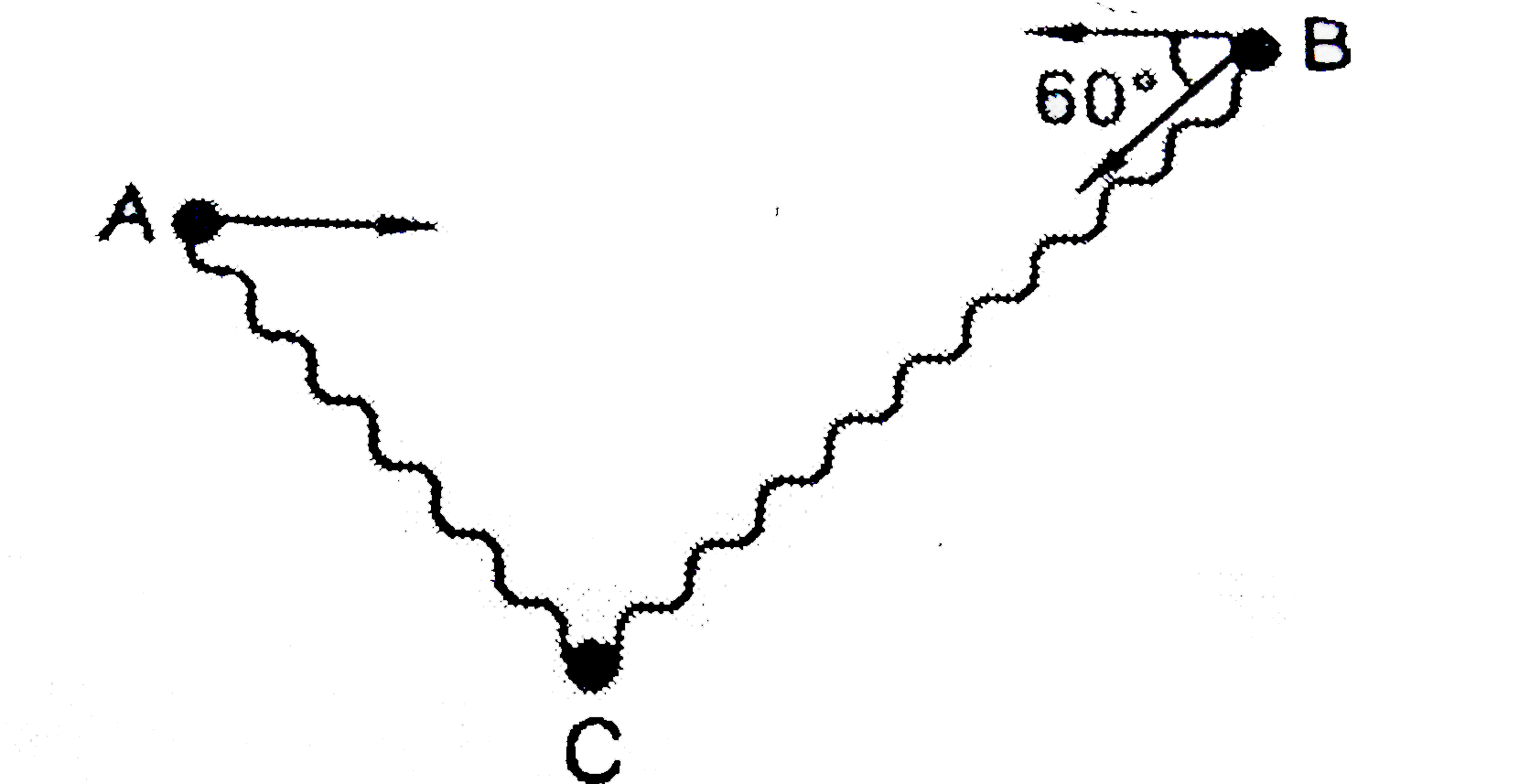A shell is fired vertically from a cannon which is travelling at constant speed u=30km/hr. the projectile leaves the connon with a velocity m/s relative to the cannon . Show that the shell will land on the vehicle at the gun location and calcu late the distance by the vehicle during the flight of shell.

The correct Answer is:s=34m
sec
Distance travelled by the cannon.
Topper's Solved these Questions
Similar Questions
A shell, which is initially located at a distance of 40.4 m above a horizontal plane, is fired horizontally with a muzzle velocity of 285 m/s to strike a target on the horizontal plane. (a) How long does the projectile remain in the air? (b) At what horizontal distance from the firing point does the shell strike the plane? What are the magnitudes of the (c ) horizontal and (d) vertical components of its velocity as it strikes the ground?
View SolutionA horizontal disc rotates with a constant angular velocity ω=6.0rad/s about a vertical axis passing through its centre. A diameter of the disc with a velocity v′=50cm/s which is constant relative to the disc. Find the force that the disc exerts on the body at the moment when it is located at the distance r=30cm from the rotation axis.
View Solution
Knowledge Check
- Question 1 - Select One
A shell is fired from a cannon with a velocity v(m/s) at an angle θ with the horizontal direction. At the highest point in its path it explodes into two pieces of equal mass. on, of the pieces retraces its path to the cannon and the speed, (in m/s) of the other piece immediately after the explosion is
A3vcosθB2vcosθC32vcosθD√32vcosθ - Question 2 - Select One
A shell is fired from a cannon with a velocity v(m/sec.) at an angle θ with the horizontal direction. At the highest point in its path it explodes into two pieces of equal mass. One of the pieces retraces its path to the cannon and the speed (in m/sec.) of the other piece immediately after the explosion is
A3vcosθB2vcosθC32vcosθD√32vcosθ - Question 3 - Select One
A shell is fired from a cannon with a velocity v(m/sec.) at an angle θ with the horizontal direction. At the highest point in its path it explodes into two pieces of equal mass. One of the pieces retraces its path to the cannon and the speed (in m/sec.) of the other piece immediately after the explosion is
A3vcosθB2vcosθC32cosθD√32vcosθ
From the top of a long smooth incline a small body A is projected along the surface with speed u. Simultaneously, another small object B is thrown horizontally with velocity v=10m/s, from the same point. The two bodies travel in the same vertical plane and body B hits body A on the incline. If the inclination angle of the incline is θ=cos−1(45) find
(a) the speed u with which A was projected.
(b) the distance from the point of projection, where the two bodies collide.
 View Solution
View SolutionAn aircraft is .flying. horizontally with a constant vefocity =200m/s at a height =1km above groun At the momement shown, a bomb is released from the aircraft and the cannon-gun below fires a shell with initial speed =200m/s , at some angle θ For what value of θ will the projectile shell destroy the bomb in mid-air? If the value of θ is 533 , find the minimum distance between the bomb and the shell as they fly past each other. Take sin53∘=4/5
 View Solution
View SolutionTwo enemy guns are placed at A and B at 10√3km apart horizontally . A shell is fired from A horizontally with velocity 10m/s. At the same time a shell of double the mass of shell at A is fired from B at an angle 60∘ with horizontal towards A with the same magnitude of initial velocity as that of A. Moving in the same vertical plane, two shells collide in air while sticking to each other and falling at the depest point of the valley C (neglect air resistance).

Calcu late how much above is the position B than position A (in km)?View SolutionTwo enemy guns are placed at A and B at 10√3km apart horizontally . A shell is fired from A horizontally with velocity 10m/s. At the same time a shell of double the mass of shell at A is fired from B at an angle 60∘ with horizontal towards A with the same magnitude of initial velocity as that of A. Moving in the same vertical plane, two shells collide in air while sticking to each other and falling at the depest point of the valley C (neglect air resistance).

Find the time of collision of the two shells (in sec).View SolutionTwo enemy guns are placed at A and B at 10√3km apart horizontally . A shell is fired from A horizontally with velocity 10m/s. At the same time a shell of double the mass of shell at A is fired from B at an angle 60∘ with horizontal towards A with the same magnitude of initial velocity as that of A. Moving in the same vertical plane, two shells collide in air while sticking to each other and falling at the depest point of the valley C (neglect air resistance).

Find the magnitude of horizontal component of the displacement vector (→BC) (inkm).View Solution
